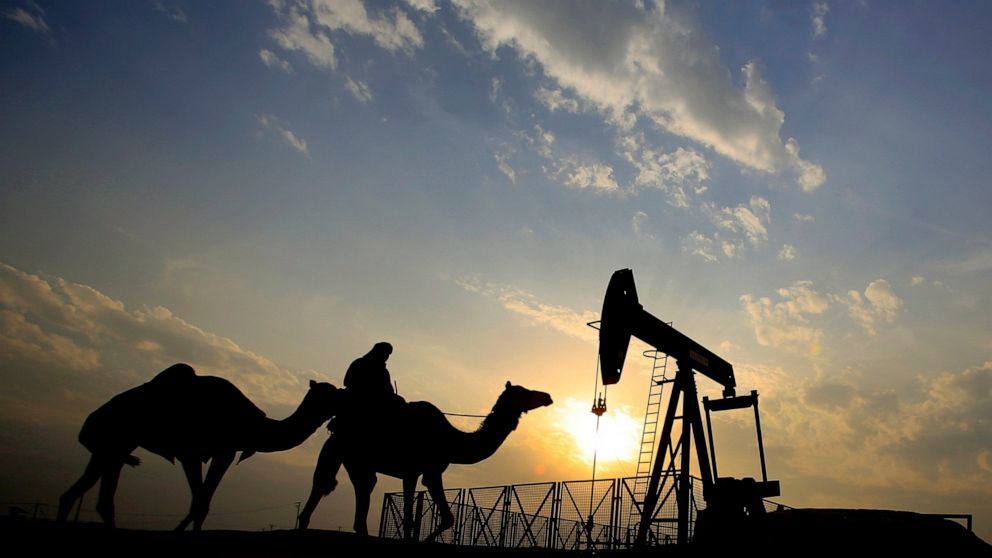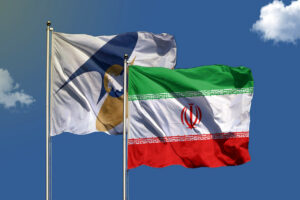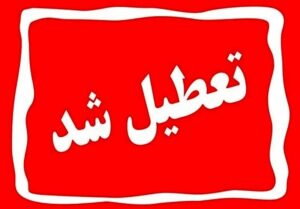Ecuaran has been in high inflation for many years. An inflation that puts a lot of economic and livelihoods on the Iranian people daily. But when we look at the history of economics, we realize that only Iran has faced this problem. In this report, we point to two experiences in the Middle East.
First, we go to Türkiye, which has experienced inflation much higher than Iran and has not even fully overcome it due to the structural problems of its economy and government. Another is Israel, who, despite the relative control of inflation, has faced problems such as monopoly and militarization, each with its own damage.
Therefore, the fight against inflation and failure against that is not and is not a strange experience. However, it is better for domestic policymakers to learn from them, given the successful and even failed experiences against the crisis of inflation in different countries, and use appropriate ways to control and control inflation.
The first curtain; Türkiye (1980 – 2001)
Türkiye began a widespread economic consolidation and liberalization program in 1980 and became a economy depending on export -oriented economics with global trade and financial markets. The average real annual GDP growth was about 4.5 percent between 1980 and 2000.
Inflation, which was an average of about 60 percent in the second half of the 1980s, rose to an average of 80 percent in the 1990s. Although foreign crises (such as the Persian Gulf crisis in 1991 – 1991, the Russian financial crisis in 1998 and the 1999 earthquakes) led to production fluctuations, domestic policies, especially inability to continue structural reform, played a key role in poor economic performance. Chronic inflation has disrupted government finance and borrowing, suppressed investment and created a serious obstacle to Türkiye’s joining the European Union, which we will continue to be formed.
The causes of inflation in Türkiye
Studies by economic experts show that Türkiye’s inflation is not merely the result of cross -sectoral shocks, but rather a rooted, resistant and complex interaction of economic, political and institutional factors.
Ikut Kibrich Boglu, by presenting a theoretical framework, considers inflation to be the result of the continuous interaction of four factors: demand factors such as liquidity growth and budget deficit, supply factors such as rising input prices and the depreciation of national currency, political and institutional factors such as pre -election populist policies and other reasons. Experimental studies also show that liquidity growth, government borrowing, devaluation of money were the most important factors affecting Türkiye’s inflation that led to the replacement of foreign currency instead of domestic currency in some transactions.
Researchers, focusing on the financial situation of the Turkish government, also show that continuous budget deficits, especially through the “government sector borrowing need”, have played a key role in continuing inflation. Turkish experts believe that, contrary to popular belief, public sector borrowing is a more accurate indicator of Turkey’s financial status than the official budget deficit, as it has a correlation with inflation rate and has long -term effects. The analysis also shows that Türkiye’s financial policy is unstable for decades, and without structural reforms, the risk of intensifying inflation and financial crises is likely.
On the other hand, Halluk Erlet has examined the “long -term memory” feature in Türkiye’s inflation rate. His findings suggest that although Turkish inflation is statistically stable, its changes occur; In other words, inflation in this country has a high shelf life. This indicates that the implementation of anti -inflammatory policies will initially face severe resistance, but if these policies succeed, their positive effects will be lasting and sustainable.
Overall, inflation in Türkiye is not merely due to cross -sectional or foreign factors, but rather a combination of chronic budget deficits, stabilized inflation expectations, currency shocks, and weakness in institutional and policy structures. The superficial or temporary measures did not sufficiently to inhibit this phenomenon; Rather, they had to go through deep reforms in the economic system, rebuilding people’s trust and confidence in institutions, and controlling inflationary expectations. In fact, Türkiye’s inflation was not a fleeting fever, but a chronic disease that needed long -term and sustainable policymaking.
Inflation inhibition programs and its goals in Türkiye
As mentioned, Türkiye began a comprehensive plan for economic consolidation and market liberalization in early 1980. In the early stages, the program quickly achieved its goals for reducing inflation, the growth of GDP, and the relative liberalization of the foreign and financial trade system.
However, this was a temporary success, and the inflation rate increased again after the election and the formation of the new parliament in year 2.
In the second half of the 1980s, Türkiye, with the support of the IMF (IMF), began several anti -inflation programs. A more important program in summer and fall was designed to reach a single -digit inflation rate by the end of the year. The main issue of the program was to adopt Crawling Peg to reduce import inflation and inflation expectations. The program also included implementation of contractionary financial policy by increasing taxes and coordinating public sector wages with inflationary goals, structural reforms in banking, social security, agriculture and energy, as well as restoring the privatization process.
In the first half of the year, the Turkish economy saw a rapid decline in real interest rates and the rise in real GDP growth. Statistics also indicate that inflation was significantly reduced after the program was running.
Despite these initial efforts and success, various sources emphasize that Türkiye failed to control inflation stable, and inflation inhibition periods were usually accompanied by its return.
The most important reason for poor economic performance and the continuity of inflation was the inability to implement structural reforms. The Turkish banking structure, which was accustomed to high inflation, showed itself to vulnerable anti -inflammatory programs and needed fundamental reform. On the other hand, the Turkish debt system was also unstable.
The delay in implementing structural reforms such as privatization and the reform of the financial system has raised concerns for market participants and reduced government credit. ATürkiye’s murder, especially its banking sector, has become increasingly dependent on the introduction of short -term and unstable capital. This dependency made the financial system very vulnerable and continued anti -inflationary programs on these capital.
The second curtain; Israel (1967 – 1985)
Israel has faced several wars between 1967 and 1985. The war with Jordan, Syria and Egypt lasted six days. In this war, Israel occupied many areas. As a result, Arab countries attacked Israel to reclaim these areas. Following the Yom Kippur war between Israel and several Arab countries. And in the early 1980s Israel attacked Lebanon.
These wars, along with Israel’s unstable political situation, led the Israeli economy to face many problems, including inflation.
The causes of inflation in Israel
Leonardo Leaderman has studied the causes of inflation in Israel. Inflation, which had even reached 400 % in 1984. He has raised 5 reasons in this regard.
The first reason for the economist has been referring to is a severe and sustainable budget deficit in Israel. In other words, in the first half of 1960, the state budget status was balanced. However, between 1967 and 1972, the Israeli government budget deficit reached 13 % and 17 % from 1973 to 1984. Studies show that the regime’s numerous aggression in 1967 and 1973 has led to an increase in military spending and has shown itself in the budget deficit.
The next reason is the ratio of the Israeli government’s debt. The government has endured a lot of debt to offset its budget deficit. So that the ratio of domestic debt to total GDP rose from 50 % in 1970 to 135 % in 1985. The government also extended its hand to its allies to cover the budget deficit and helped external debt. The more precise expression of the amount of external debt to GDP has reached from 40 % to 80 %. The most important thing is that according to Israeli law, this domestic debt has grown with the country’s inflation and foreign debt with world dollar inflation, and therefore the real value of debt has not been reduced.
The third is related to the government’s limited ability to create money. In fact, with the rise of inflation, the government can make money by creating money. But according to an economic theory, if leveling inflation goes higher, it is no longer possible to finance money. In this context, data suggests that when inflation in Israel reached 400 percent in 1980 in 1984, the government’s income from money was almost constant.
The fourth cause associated with the inflationary effect is wage increase. In other words, after the pressure of the trade unions between 1970 and 1980, the actual wages grew 20 % and by 1984 in the second phase, another 16 % greased real wages. These increases at the real wage level have gradually and gradually contributed to the growth of inflation and its shelf life.
The last factor in Türkiye is also related to the compatibility of Israeli institutions with high inflation. In other words, the proportion of wages and financial assets with inflation, as well as comparative and non -comparative monetary and currency policies, have made local and temporary shocks become sustainable and lasting inflation.
Control of inflation in Israel
Israel has employed policies in inflation management. Why, instead of inhibiting inflation, it is that inflation has been able to fulfill important economic and political goals. But inflation, however, would not have increased to some extent that it would be out of control and lead to inflation cloud. Therefore, the Israeli government’s plan was not to stop inflation or reduce its level to the level of developed countries, and the goal of controlling the inflation index was 100 to 200 %.
The Israelis were to control inflation of policies such as exchange rate stabilization, preventing wage rise in proportion to inflation, applying monetary and contractionary monetary and financial policies, lowering $ 1.5 billion, and ultimately stabilizing prices in the economy, which is an unusual policy in the mainstream economics. US financial aid and economists also contributed to inflation in Israel.
Despite anti -inflationary policies that often reduce economic growth and recession temporarily, this was not observed in Israel at first. The duration of the inflation control program was 5 years. In the first two years, the Israeli people did not take these policies seriously, and so the level of economic activity increased in the first two years, and people’s consumption increased. But in the final three years of the inflation management program in Israel, the signs of stagnation and inflation control policies were observed in the Israeli economy.
The result of inflation control policies in Israel
Inflation management policies have increased the focus and monopoly in the Israeli economy. This, along with the many wars that Israel had carried out, has made its economy structure in addition to increasing concentration. This financial dependence and military -oriented structure paved the way for power to focus on several major industrial and banking companies. These companies, often run by former troops and government executives, had half of the Israeli industry and became a focal point to continue militarization and prevent economic and political structural reforms. In such circumstances, the possibility of fundamental transformation in Israeli domestic and foreign policies was very limited.
The Israeli economy in the 1980s was heavily influenced by the structure of government spending, especially the military budget. In year 2, although the country’s GDP was estimated at $ 1.5 billion, the government’s annual budget reached $ 5 billion, most of which was spent on direct and indirect military spending. Despite the official announcement of $ 5 billion, independent estimates show that the actual military spending was about $ 2 billion or about 2 percent of the country’s total budget. This was the highest per capita military cost in the world and had a profound impact on the government’s economic priorities.
Conclusion
The most important lesson learned about inflation policy reform is the issue of adaptation of financial institutions and policy makers to high inflation. In Iran, too, we see that the experience of reducing inflation to below 10 % has become against the banking system, and the increase in inflation to high levels with a impulse. Access to the international credit system can also be a good tool to reduce the risks of these projects, Israel relying on US foreign aid, and Turkey has the support of the IMF.







